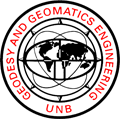Just Wait a Second
The International Earth Rotation and Reference Systems Service has announced that December 31, 2005 will contain an extra second. Rather than the usual 86,400 seconds in a day, the last day of the year will have precisely 86,401 seconds. National time-keeping centers around the globe will insert the extra second or “leap second” into their master clocks and all other clocks which get their time from the master clock will be updated similarly. For example, so-called “atomic clocks” that receive radio signals from a time signal station such as WWVB in the United States will automatically adjust their time for the extra second.
Leap seconds are used to keep our clocks more or less synchronized to the Earth's rotation. Although the Earth appears to rotate uniformly with night following day since time immemorial, the Earth actually does not rotate at a constant rate. It fluctuates slightly due to a variety of causes including variations in winds and ocean currents, the motions of the fluid core, and the friction of tidal currents flowing along the bottom of the oceans. Tidal friction results in a long-term or secular decrease in the Earth's rate of rotation amounting to about 2.3 milliseconds per day per century. This means that over a period of 1,000 days, a clock keeping time based on the rotation of the Earth, a time scale called UT1, would lose about 2.3 seconds compared to the world's standard time scale, Coordinated Universal Time (UTC), which is based on the atomic second and referenced to the period of the Earth's rotation about 100 years ago. To keep UTC to within 0.9 second of UT1, so-called “leap seconds” are periodically added to UTC. While tidal friction is the primary reason for adding these leap seconds, the other factors responsible for the variation in the Earth's spin contribute as well. In fact, negative leap seconds are theoretically possible, although all leap seconds to date have been positive.
The last leap second occurred on December 31, 1998. Previous to that, leap seconds had been added every year or two going all the way back to 1972 when the practice of adding leap seconds to UTC was started. But non-tidal factors have slowed the rate of decrease of the Earth's rotation over the past 7 years or so, so that another leap second has not been needed until now.
The need for a leap second is determined by the IERS's Earth Orientation Centre at the Paris Observatory. Using a global network of satellite and lunar laser ranging, very long baseline interferometry, and Global Positioning System stations, they accurately determine UT1. Then, in consultation with the Bureau International des Poids et Mesures in Sèvres, France, the keepers of the atomic second and the UTC standard, they determine when a leap second is needed to keep UTC in sync with the Earth's rotation.
GPS operations are unaffected by the introduction of a leap second because its time system, GPS (System) Time, is not adjusted for leap seconds. GPS Time was set equal to UTC in 1980 and is currently 13 seconds ahead of it. Come New Year's Eve, this offset will increase to 14 seconds. GPS does provide UTC by transmitting the necessary data in subframe 4, page 18 of its navigation message, permitting a receiver to compute UTC from GPS Time.
The upcoming leap second might be the last. The United States has proposed to a working group of the International Telecommunication Union that leap seconds be abolished. The justification for the proposal is that leap seconds are cumbersome and their incorrect use could lead to problems with electronic navigation systems such as GPS. Furthermore, they would argue that the only reason UTC is being kept close to UT1 is for the sake of navigators making traditional astronomical observations with sextants. And with GPS so widely available, there are fewer and fewer navigators who even know how to use a sextant. But the debate on the abolition of leap seconds is far from over. Stay tuned.
Richard B. Langley
14 September 2005
(An abridged
earlier version of this article appeared in the September 2005 issue of GPS
World magazine.)


